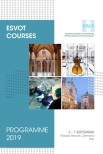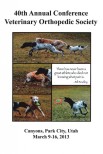OBJECTIVES: To describe the range of motion and clinical stability of the feline shoulder following experimental injury and repair using a prosthetic suture technique.
MATERIALS AND METHODS: Eighteen feline cadaveric thoracic limbs were randomly allocated into three groups: medial injury, lateral injury or bilateral injury. Joint range of motion and clinical stability in all directions was recorded before and after specific anatomic structures were sectioned and following surgical repair using a prosthetic suture technique. Results were compared between intact, injured and repaired limbs for each injury type.
RESULTS: There was a significant difference in joint range of motion in specific limb directions between intact and injured joints and between injured and repaired joints. There was no difference in joint range of motion between intact and repaired joints. Four of six medially injured joints were deemed clinically stable and five of six laterally injured joints were deemed clinically stable. All bilaterally injured joints were deemed unstable.
CLINICAL SIGNIFICANCE: The relative contributions of shoulder stabilisers to joint range of motion and clinical stability provide a reference for clinical cases with suspected shoulder instability. The prosthetic suture repair technique described was effective at returning the shoulder joint to a normal range of motion in this ex vivo model.









